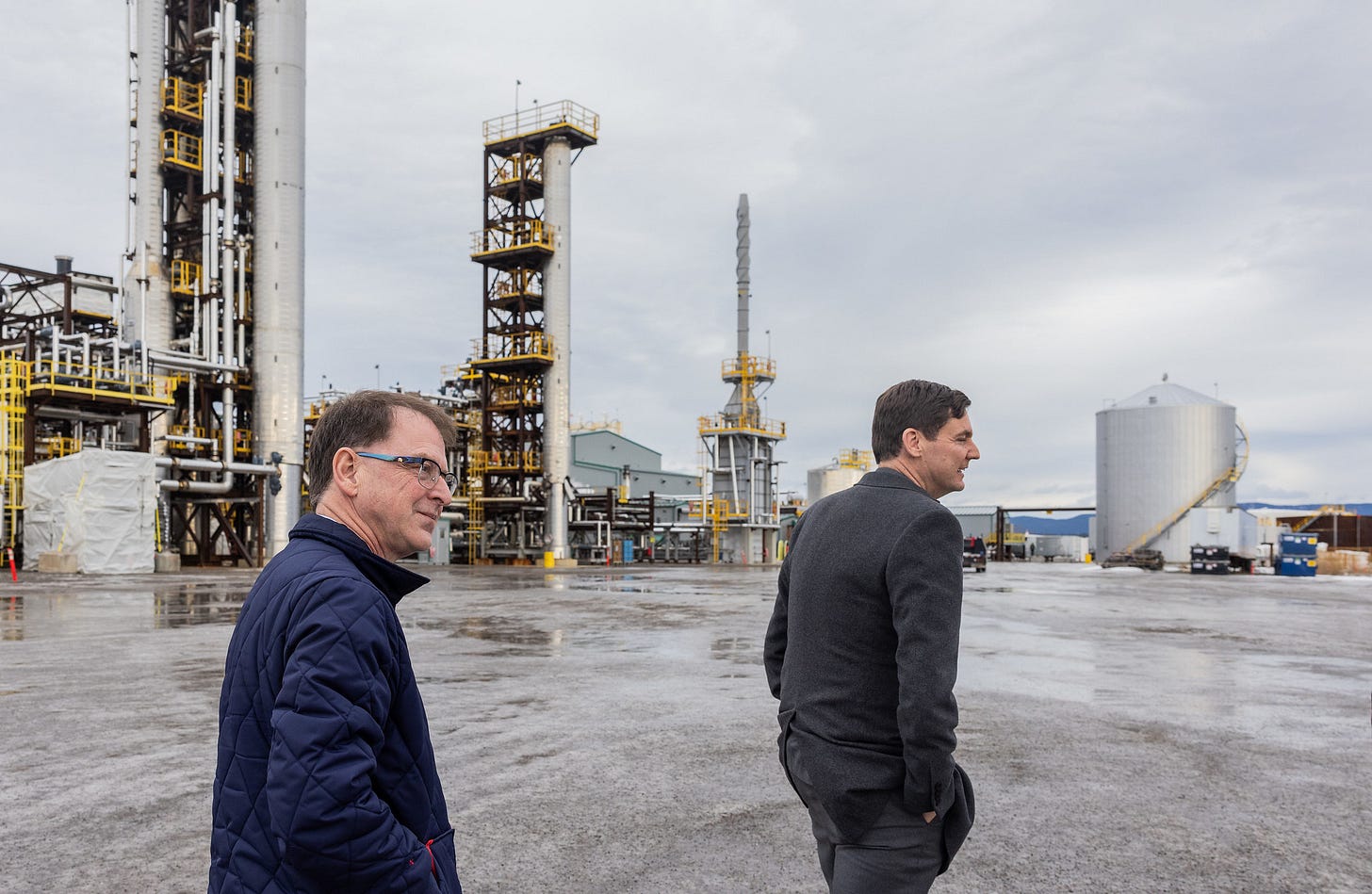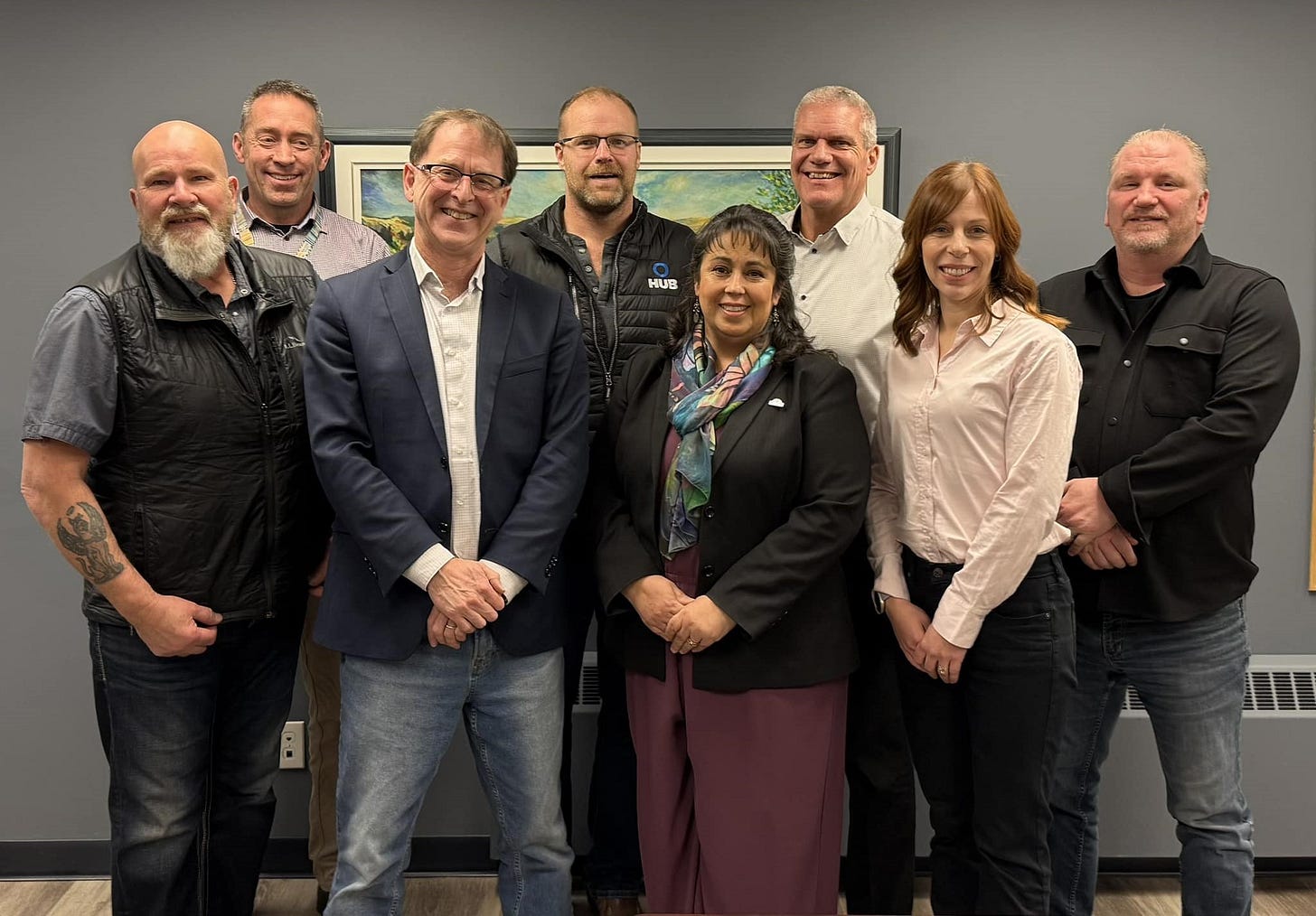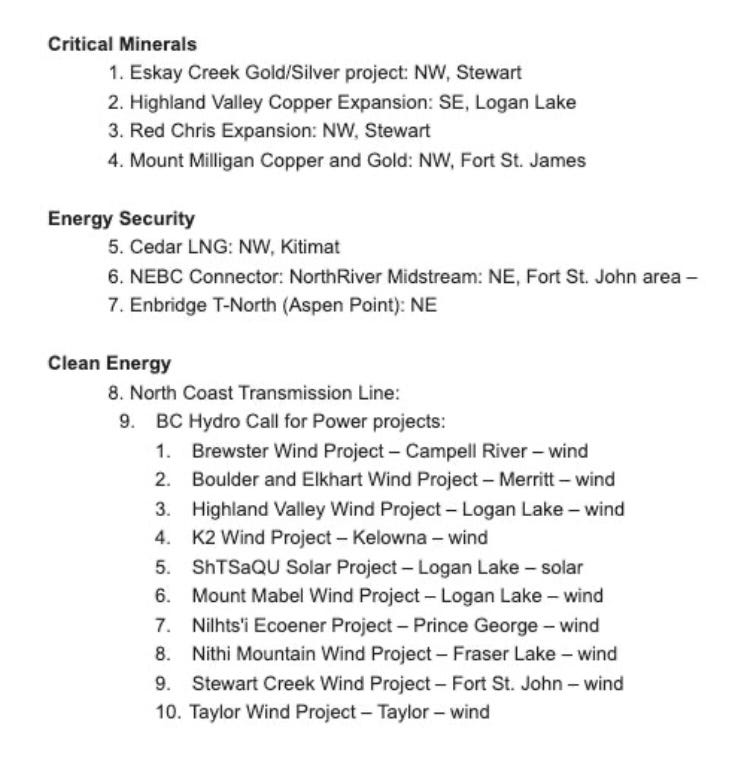
Provincial government ministers don’t often find their way north of Prince George, so when they do, local officials make sure they take advantage of the visit to discuss topics that are important to the people of Fort St. John and surrounding area.
This was the case on Friday, when the former NDP health minister, now Minister of Energy and Climate Solutions, Adrian Dix came north and took the time for a protracted and fulsome meeting with Mayor Lilia Hansen and council.
“There’s nothing like having the minister in your community, you can talk about things, and they can also see it at the same time,” Hansen said.
“To have him come into City Hall, I think that is a dramatic change from what we’ve seen in the past four years. I do believe that there is a positive outlook, there’s a change in their understanding and their willingness to look at other options on how to help grow our province.”
Most of council, plus Chief Administrative Officer Milo MacDonald, were able to attend the meeting at City Hall. Hansen said was important to meet with this minister in particular because although council aren’t experts, “We do live the life when it comes to natural resources around us.
“Whether it’s because it’s our bread and butter, or it’s what keeps our community functioning, it helps support the many, many other treasures of services that we enjoy here in the province.”
Hansen said that being able to meet with Minister Dix at City Hall was a welcome change from other meetings with ministers, particularly at the Union of BC Municipalities conference where the 15-minute meetings local government representatives get with their provincial counterparts feels a lot like speed-dating.
“He also extended the meeting. It was that fulsome of an engagement,” she said. “It was great, I really appreciated that he was willing to listen to the concerns that we were hearing as well from industry.”
The conversation centred around the region’s natural resources, and touched on topics such as projects, carbon caps, electrification and streamlining processes to provide increased certainty for businesses operating in British Columbia, particularly the North.
While Dix didn’t address any specific projects, he did say he’s working with Alberta Premier Danielle Smith and Hansen is hopeful that “we’re going to see more cooperation between the two provinces when it comes to streamlining of regulations.”
Since Dix’s visit to Fort St. John, Premier David Eby released a list of approximately $20 billion worth of projects that the province intends to fast-track in the face of President Trump’s tariff threats. Of these projects, two are the recently announced windfarms in the Peace region – Stewart Creek Wind Project and Taylor Wind Project – while the third project in the region is NorthRiver Midstream’s NEBC Connector project.
This last project, which will transport condensate and natural gas liquids from Wonowon to Gordondale Alberta, began its engagement in the second quarter of 2020. In December 2023, the Canada Energy Regulator gave its approval, while the BC government didn’t issue approval until three weeks ago, on January 17, 2025. NorthRiver plans to have the project in-service by the second quarter of 2027.
The permitting process needs to be streamlined, Hansen said. British Columbia isn’t the easiest province to do business in, and there’s a lot of money and investment that’s going to other areas of Canada and the United States.
“How do we get that money and investment back once it’s left,” she asked. “It’s that uncertainty, I just keep hearing it over and over.”
Hansen hopes that if Dix and Eby keep hearing from different stakeholders that the process is too slow, that investment is leaving the province, the message will eventually get through.
“If nothing else, it helps just to keep putting these concerns forth, and I believe the more times someone hears something and from various sources, I’m hoping that will hit back to the core of the responsible management of our resources.”
One example of the stagnating permitting process is the wood cutting permits, which Hansen says must be frustrating for the forest industry.
“We’ve had a track record over the years, of being able to do them in a certain period of time, and when it has ballooned to such a huge length of time – going from 60 to 90 days to two or three years – obviously there’s been changes legislative-wise and in the courts that have caused that in our area,” she said.
“It doesn’t seem to matter what resource sector; it all comes back to the timing of permits. The speed and efficiency of getting permits. It doesn’t matter if it’s forestry, mining, gas, we’re hearing that there needs to be that certainty for business.”
Hansen believes that the government is looking for ways to streamline permitting processes and get projects built, to become more self-reliant and diversify our economy. It’s part of Dix’s portfolio mandate, to cut red tape and find efficiencies.
“How many times do we have to go through some crisis to realize the importance of being able to, as an independent country, provide the resources and the products that we need?”
While the province professes to be concerned about climate, reducing carbon and the environment, there is a definite emphasis on getting the nine windfarm projects up and running as quickly as possible.
Which is one of the regional concerns Hansen brought up – the waiving of the Environmental Assessment process for the nine new windfarms projects.
The Peace River Regional District wants to see projects proceed, but Environmental Assessments and cumulative impact assessments are needed to ensure that there’s no regrets a few years down the road after projects are pushed through quickly.
“There’s checks and balances in place for a reason,” Hansen said.
Overall, Hansen felt that Dix was listening to them.
“He didn’t steer away from anything we bought up. We were able to touch on concerns that we heard, and he was able to answer what he could,” she said.
“Of course, nothing that he says at these meetings is going to be a firm commitment, but it sounded like this is more focussed towards wind power. It’s towards the wind power projects, needing to get things processed faster.”
“But at their core, it will always be the environment.”




